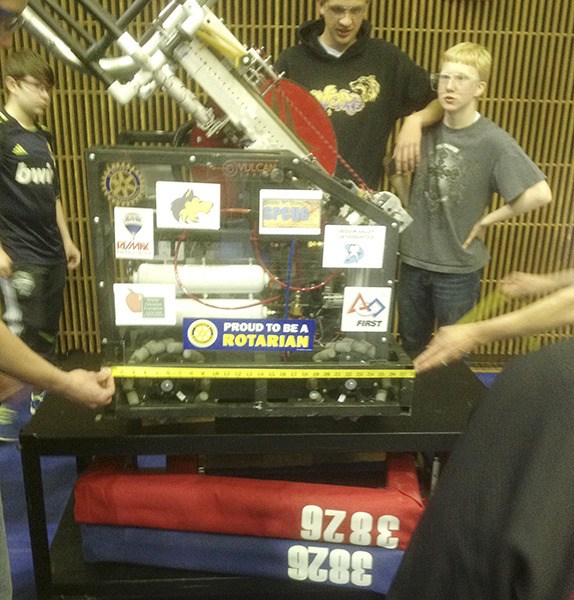Robotics Club is a very unique club because we only have six weeks to build a robot that can complete the tasks we are given each January. After the six-week period, we compete with teams from all over the Northwest.
This year’s competition was called Aerial Assist. In Aerial Assist, there are two alliances of three teams that need to move a 2-foot diameter ball across a court. The alliances then have to shoot the ball into a 10-point or 1-point goal. The more passes or assists the alliances made while getting the ball down the court, the more bonus points the alliance will receive.
In order to compete we had to build a robot that could pick up, catch and shoot the ball. We spent hundreds of hour in the woodshop and CAD (computer-aided drafting) lab programming, designing, prototyping, fundraising for and building the robot.
This year’s robot had a lot of cool features. The shooting mechanism was based off of a ballista and the catching mechanism was two arms made of PVC pipe. We put mechanum wheels on the robot and these allow the robot to move forward, backward, side to side and diagonally. It also made tuning the robot a lot easier. We even had a #D printed ram head on our shooting mechanism!
In addition to the mechanical aspect, we had to wire the robot and attach an electrical board to the robot. To make all of these cool mechanisms and aspects function uniformly, we had to program the robot. Throughout the build season we encountered many mechanical, electrical and programing difficulties, but through blood, sweat and a few tears, literally, we completed the robot.
“When we were finally at competition it was the best feeling ever!” team member Danielle Arnold said. “It was endless crazy between bringing the robot on and off the field, working on the robot, scouting and running around getting small, but significant, jobs done.”
Competition can be summed up in two words: Murphy’s Law. In other words, anything that could go wrong DID! We would fix one thing on the robot and another would break.
In the end, however, we made it all the way to the quarterfinals. During competition, there were several jobs that contributed to our success.
The first job is drive team. It consists of a driver, shooter, captain and human player. They control the robot during our matches.
Another job is scouting where members watch other robots and take notes on their strengths and weaknesses. These notes are used later to help choose our alliance in the final rounds of the competition.
The third job is the pit crew. In the pits, members will repair the robot and talk to judges and other teams about our robot. All of these jobs are equally significant and contribute greatly to the team’s overall success.
At the end of the day we really are just a big family having fun and goofing off, while learning important life skills like work ethics, leadership, communication, problem solving and teamwork. We learn concepts in math, science, engineering, technology and arts, then get to apply them in Robotics. Robotics is a fantastic and interesting club, and without the help from out amazing mentors, sponsors and members this couldn’t be possible.
Nicholas Howe is a sophomore at Sequim High School.



